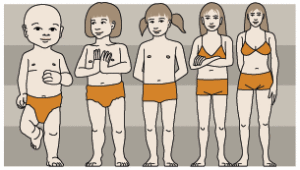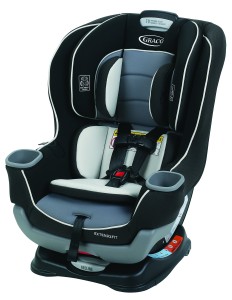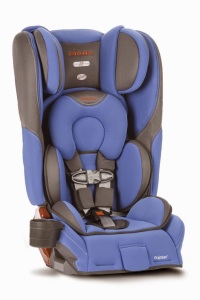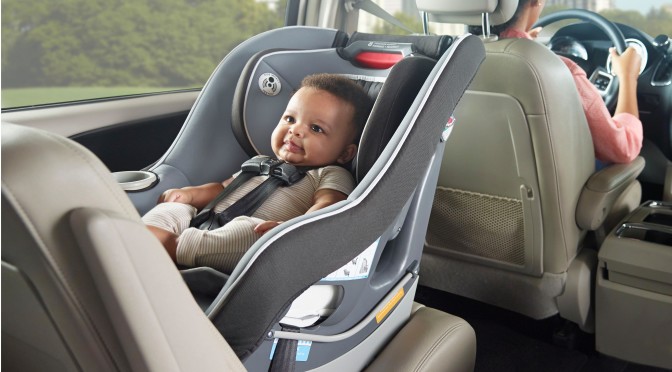“It’s a horrible term,” she said, “but E.M.T.’s call the rear-facing seat ‘the orphan seat’ because in a bad car accident, that child is often the only one who survives.” – Pediatrician at Morgan Stanley Children’s Hospital in New York.
I most recently wrote about the phenomenon of the orphan seat here, in the story of a Utah toddler, Lily, who survived a crash that killed her mother and left her hanging upside down in her car seat while the car she was trapped in lay half-submerged in a river. While her mother sadly passed away, Lily lived.
I’ve written about the orphan seat several more times in the past, and will continue to write about the phenomenon because I feel the need to continue to advocate for the use of the right car seats in the right ways at the right times, the importance of safe driving, and the value of choosing safe vehicles at any budget.
Of course, no parent wants to think of passing away in a severe car crash, but I can’t think of any parent who’d rather have their child pass away with them than have the chance to continue living, whether with the other parent, with grandparents or godparents, or with extended family. However, if we’re not rear-facing as long as we can, especially between birth and the preschool years, we’re placing our children at a severe disadvantage compared to what we know about what it takes to survive car collisions.
Current laws in the US only require children to rear-face until 1, except for in New Jersey, which leads the US with a minimum forward-facing requirement of 2 years. However, even New Jersey doesn’t go nearly far enough. In Sweden, as I’ve noted elsewhere, the standard is 4 years, and it’s considered as normal as rear-facing until 1 is here. As a result, they lose nearly no young children to car collisions each year. Let’s look at 3 excellent, science-based reasons to practice extended rear-facing.
3 big, science-based reasons to rear-face your kids past 1, 2, and 3
1. Children’s proportions are different from adult proportions.
 Look at the image on the left from the kind folks at Rear Facing in the UK. Most parents and people who work with very young children are aware of how disproportionately large infant heads are. However, most aren’t aware of how much of a change people go through from infancy to adulthood. A 9-month old’s head alone is 25% of his or her weight. The head of an adult, in contrast, is only 6% of his or her weight.
Look at the image on the left from the kind folks at Rear Facing in the UK. Most parents and people who work with very young children are aware of how disproportionately large infant heads are. However, most aren’t aware of how much of a change people go through from infancy to adulthood. A 9-month old’s head alone is 25% of his or her weight. The head of an adult, in contrast, is only 6% of his or her weight.
What this means is that proportionally speaking, a child’s head is quite relatively compared to the rest of his or her body, and as a result, in a collision, the child’s neck must deal with that proportionally greater strain. To put it even more simply, if a 160-pound woman had the proportions of a baby, her head would weigh 40 pounds and her neck would be a lot more likely to break in much milder collisions than those normal adults could walk away from.
Rear-facing distributes the tremendous forces of a crash through a child’s head, neck, and back, via the car seat behind the child’s head, neck, and back. Forward-facing concentrates those forces into the neck.
2. One quarter of an inch is all it takes to paralyze a child.
Along the same lines, the spinal cord of a child is encased within a spine and skeleton that continue to grow and that aren’t made of hard bones yet. There’s lots of cartilage (the same material our noses and ears are made of) peppered throughout. As a result, in a crash where a child is forward-facing, all that energy that flings his or her disproportionately large head forward gets concentrated into the neck area, which can stretch (due to inertia, or why we’re thrown forward into our seat belts when braking suddenly). It can stretch significantly. If it stretches the spine more than 1/4th of an inch, it snaps. That’s all it takes to paralyze or kill a child.
When rear-facing, that traumatic stretching is much, much, much, much, much (5x, actually) less likely to occur.
3. Their rib cages bend instead of snap.
A third science-based reason to keep rear-facing has to do with the thoracic cavity, or the chest. Because kids have lots of cartilage instead of solid bone, their rib cages also behave differently than ours–than those of adults. The function of the rib cage is to protect the heart and lungs, as well as a few additional organs. The heart and lungs are the biggest ones, however. This is why our ribs are designed to crack, as painful as it may be, as a way of absorbing what could otherwise be a life-ending amount of energy coming toward our chests. However, children’s rib cages have much more cartilage than ours do (we still have some to help our ribs move when we breathe), which means that when pressed against a harness in a forward-facing collision, the ribs are much more likely to press into our soft internal organs, which can easily lead to severe internal trauma and death.
When rear-facing, of course, that harness-to-rib force is much less likely to occur since the chest is moving away from the harness and toward the back of the seat in a collision. In other words, it’s much safer.
No parent wants to leave this world while their children are young, and especially in such a tragic way as through a car crash. But I also don’t know of any parents who’d rather their children left this world before they did because they weren’t safely restrained. Right now, the dominant US approach to car seat safety is wrong, whether in terms of the laws on the books or in people’s perspectives and beliefs. If you’re reading this blog, you know it’s important to go beyond the minimum to keep your children and family safe, and it’s my hope that the more of us there are, the quicker we can spread the word about the importance of extended rear-facing, safe driving, and a sustainable approach to road safety that leaves everyone safer.
Mike, you’ve convinced me to rear-face past 1, 2, and even 3. Now help me do it! What are good seats for extended rear-facing until 4 or 5 (or until Kindergarten!)?
Things have never been better in terms of ERF potential here in the United States. I’ve reviewed dozens of seats that will let your kids rear-face until 40, 45, or 50 pounds here, but here are my absolute favorites at the moment:
 Under $200, I think the best convertibles on the market right now are the Graco Extend2Fit, Safety 1st Grow and Go EX Air, and Safety 1st Advance EX 65+ Air+. The three seats are very similar, with the main differences including widths and whether they include additional booster modes or not. All of these seats are designed to be used from the day your child leaves the hospital until the day s/he weighs 50 pounds. They have among the highest height limits on the market, which means that just about any child will be able to use them until at least turning 6. Lighter children may get additional time out of them past 7!
Under $200, I think the best convertibles on the market right now are the Graco Extend2Fit, Safety 1st Grow and Go EX Air, and Safety 1st Advance EX 65+ Air+. The three seats are very similar, with the main differences including widths and whether they include additional booster modes or not. All of these seats are designed to be used from the day your child leaves the hospital until the day s/he weighs 50 pounds. They have among the highest height limits on the market, which means that just about any child will be able to use them until at least turning 6. Lighter children may get additional time out of them past 7!
 Under $300, my favorite convertibles on the market right now are the Diono Rainier and the (now discontinued) Diono Pacifica. Again, both seats are almost identical; the main difference lies in the head wings present in the Rainier, which are designed to offer additional side impact protection. Both seats will allow you to rear-face from birth until 50 pounds and both have the capacity to keep the average toddler rear-facing until 5. They can then be turned forward-facing and work for another few years as forward-facing harnessed seats.
Under $300, my favorite convertibles on the market right now are the Diono Rainier and the (now discontinued) Diono Pacifica. Again, both seats are almost identical; the main difference lies in the head wings present in the Rainier, which are designed to offer additional side impact protection. Both seats will allow you to rear-face from birth until 50 pounds and both have the capacity to keep the average toddler rear-facing until 5. They can then be turned forward-facing and work for another few years as forward-facing harnessed seats.
 If money’s no object, I think the best convertibles on the market right now are the Clek Fllo and Clek Foonf. Yet again, both seats are very similar, but in this case, I think the cheaper seat (the Fllo) is a better deal than the Foonf. Combine either seat with the Clek Infant Insert and you can start out rear-facing from birth and keep it up until 50 pounds. As with the Rainier / Pacifica, both seats are also sure bets to keep your toddlers rear-facing until 5. The height limits in the Fllo and the Foonf are slightly higher than those in the Rainier / Pacifica, making them a slightly better choice for taller children.
If money’s no object, I think the best convertibles on the market right now are the Clek Fllo and Clek Foonf. Yet again, both seats are very similar, but in this case, I think the cheaper seat (the Fllo) is a better deal than the Foonf. Combine either seat with the Clek Infant Insert and you can start out rear-facing from birth and keep it up until 50 pounds. As with the Rainier / Pacifica, both seats are also sure bets to keep your toddlers rear-facing until 5. The height limits in the Fllo and the Foonf are slightly higher than those in the Rainier / Pacifica, making them a slightly better choice for taller children.
 If you find my information on best practices in car and car seat safety helpful, you can do your shopping through this Amazon link. Canadians can shop here for Canadian purchases. Have a question or want to discuss best practices? Join us in the forums!
If you find my information on best practices in car and car seat safety helpful, you can do your shopping through this Amazon link. Canadians can shop here for Canadian purchases. Have a question or want to discuss best practices? Join us in the forums!

